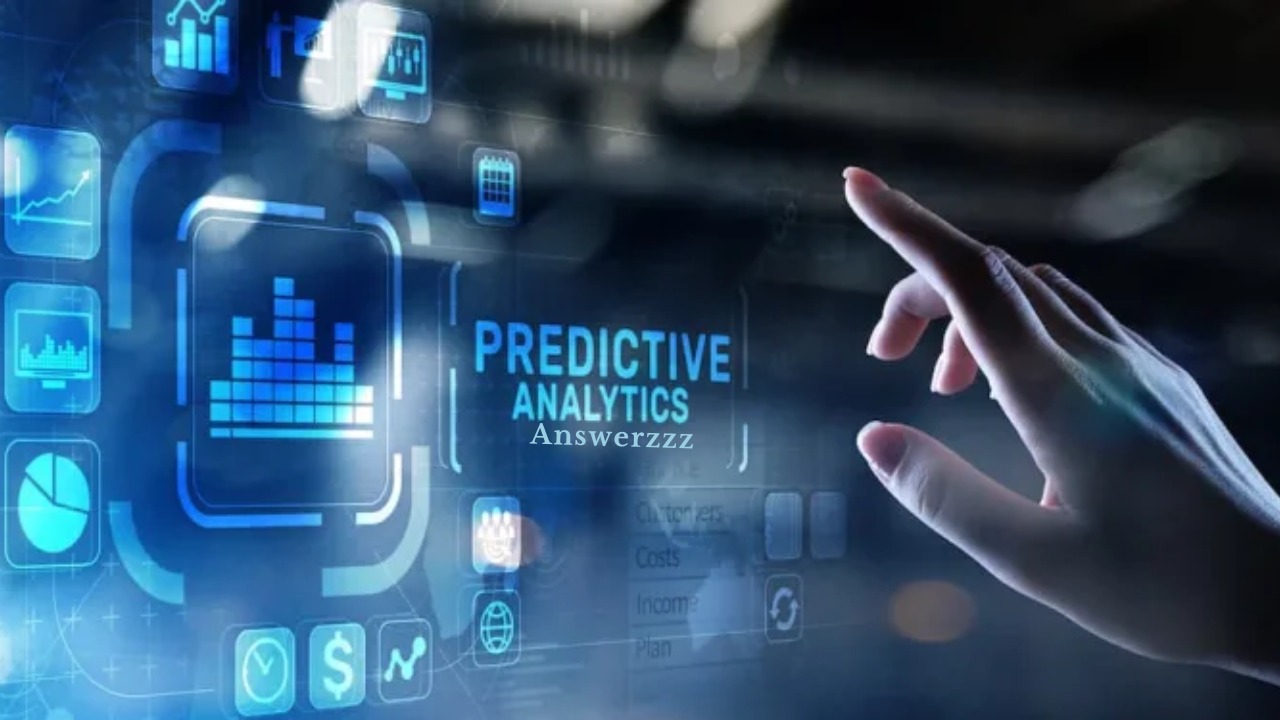Predictive analytics has emerged as a game-changing tool in the world of marketing, transforming how businesses understand their customers, optimize their campaigns and ultimately drive sales. By leveraging data and statistical algorithms, companies can predict future outcomes based on historical data, enabling them to make informed decisions and develop targeted marketing strategies. This article delves into the various aspects of predictive analytics in marketing, exploring its significance, benefits, applications, and future trends.
Understanding Predictive Analytics

At its core, predictive analytics involves using historical data and machine learning techniques to identify patterns and forecast future events. In marketing, this means analyzing customer behaviour, preferences, and trends to anticipate future buying patterns. By utilizing vast amounts of data collected from various sources, businesses can gain insights into customer behaviour that were previously unattainable. This data-driven approach allows marketers to create more personalized and relevant experiences for their customers, leading to increased engagement and conversion rates.
Predictive analytics utilizes a variety of techniques, including statistical modelling, data mining, machine learning, and artificial intelligence (AI). By integrating these methodologies, businesses can analyze customer interactions across multiple channels, such as websites, social media, and email campaigns. The insights derived from this analysis can inform marketing strategies, optimize resource allocation, and improve overall campaign effectiveness.
The Importance of Predictive Analytics in Marketing
As the digital landscape becomes increasingly competitive, the need for effective marketing strategies has never been more critical. Predictive analytics offers businesses the ability to stay ahead of the curve by understanding customer preferences and anticipating market trends. The importance of predictive analytics in marketing can be highlighted through several key factors.
Enhanced Customer Insights
Predictive analytics enables marketers to gain deeper insights into customer behaviour, preferences, and purchasing patterns. By analyzing data from various touchpoints, businesses can identify trends and preferences that inform their marketing strategies. For example, understanding which products are most likely to be purchased together can help marketers create targeted cross-selling and upselling campaigns.
Moreover, predictive analytics allows marketers to segment their audiences more effectively. By grouping customers based on shared characteristics or behaviours, businesses can tailor their messaging and offer to specific segments, enhancing the relevance of their campaigns and improving conversion rates.
Blockchain and IoT: Securing the Future of Connected Devices
Improved Marketing Efficiency
Another significant benefit of predictive analytics is its ability to improve marketing efficiency. By identifying the most promising leads and opportunities, businesses can allocate their resources more effectively. For example, predictive analytics can help identify which customers are most likely to respond to a particular marketing campaign, allowing marketers to focus their efforts on high-value prospects.
Additionally, predictive analytics can optimize marketing spend by providing insights into the channels and tactics that yield the best results. By analyzing past campaign performance, businesses can identify which strategies deliver the highest return on investment (ROI) and adjust their budgets accordingly.
Personalized Marketing Experiences
In today’s consumer-driven market, personalization is crucial. Customers expect brands to understand their needs and preferences, and predictive analytics enables businesses to deliver personalized marketing experiences. By analyzing customer data, marketers can create tailored messages, product recommendations, and offers that resonate with individual consumers.
For example, streaming services like Netflix use predictive analytics to recommend shows and movies based on a user’s viewing history. By delivering personalized recommendations, these platforms enhance user engagement and satisfaction, ultimately driving customer loyalty and retention.
Applications of Predictive Analytics in Marketing

Predictive analytics finds numerous applications in marketing, allowing businesses to leverage data to drive results. Some key applications include:
Customer Segmentation
Effective customer segmentation is essential for successful marketing campaigns. Predictive analytics allows businesses to segment their customers based on a variety of factors, such as demographics, purchasing behaviour, and engagement levels. By grouping customers with similar characteristics, marketers can develop targeted strategies that resonate with each segment.
For instance, an online retailer might use predictive analytics to identify high-value customers who frequently purchase premium products. By understanding this segment’s preferences, the retailer can create personalized marketing campaigns that cater to their specific needs, increasing the likelihood of repeat purchases.
Churn Prediction
Customer churn is a significant concern for businesses across industries. Predictive analytics helps identify customers at risk of leaving, allowing marketers to take proactive measures to retain them. By analyzing patterns in customer behaviour, businesses can pinpoint warning signs of churn and develop targeted retention strategies.
For example, a subscription service may use predictive analytics to identify customers who have not engaged with their platform in a while. By sending personalized re-engagement emails with tailored offers, the company can encourage these customers to return and continue their subscriptions.
Campaign Optimization
Predictive analytics plays a crucial role in optimizing marketing campaigns. By analyzing historical data, businesses can determine which tactics and channels are most effective for reaching their target audience. This insight allows marketers to refine their campaigns in real-time, ensuring that resources are allocated efficiently and results are maximized.
How AI is Helping Identify and Address Climate Change Issues
For example, an email marketing campaign can be optimized using predictive analytics to determine the best time to send messages, the most effective subject lines, and the ideal frequency of communication. By continuously analyzing campaign performance, businesses can make data-driven adjustments that enhance engagement and conversions.
Lead Scoring
Predictive analytics also assists in lead scoring, which helps businesses prioritize their sales efforts. By analyzing historical data on customer interactions, marketers can assign scores to leads based on their likelihood to convert. This allows sales teams to focus their efforts on the most promising prospects, improving overall conversion rates.
For instance, a B2B company might use predictive analytics to analyze the characteristics of leads that converted in the past. By identifying common traits, such as company size, industry, or engagement levels, the company can create a scoring system that highlights leads with the highest potential for conversion.
Challenges in Implementing Predictive Analytics
While the benefits of predictive analytics are substantial, implementing these strategies is not without challenges. Businesses must navigate several obstacles to fully harness the power of predictive analytics in their marketing efforts.
Data Quality and Integration
The effectiveness of predictive analytics hinges on the quality and comprehensiveness of the data used. In many cases, organizations struggle with data silos, where information is fragmented across different systems and departments. To effectively leverage predictive analytics, businesses must ensure that they have access to clean, high-quality data from various sources.
AI in Legal Tech: Streamlining Legal Processes for a New Era of Efficiency
Additionally, integrating data from disparate systems can be complex. Marketers need to ensure that their analytics tools can effectively collate and analyze data from various channels, such as CRM systems, social media platforms, and website analytics. Without proper data integration, businesses may miss out on valuable insights that inform their marketing strategies.
Talent and Expertise
Another challenge in implementing predictive analytics is the need for specialized skills and expertise. Marketers must have a solid understanding of data analytics, statistical modelling, and machine learning to effectively leverage predictive insights. Unfortunately, there is a shortage of professionals with the necessary skills in the job market.
To overcome this challenge, businesses may need to invest in training programs for their existing teams or partner with data analytics firms that can provide the expertise needed to implement predictive analytics successfully.
Ethical Considerations
As businesses increasingly rely on predictive analytics, ethical considerations become paramount. Companies must be transparent about how they collect and use customer data, ensuring that they comply with regulations such as the General Data Protection Regulation (GDPR) and the California Consumer Privacy Act (CCPA).
Marketers must strike a balance between leveraging customer data for personalized marketing and respecting consumer privacy. Failing to address these ethical concerns can lead to negative public perception and damage a brand’s reputation.
The Future of Predictive Analytics in Marketing
As technology continues to evolve, the future of predictive analytics in marketing looks promising. Several trends are expected to shape the landscape of predictive analytics in the coming years.
Increased Use of Artificial Intelligence
The integration of artificial intelligence (AI) and machine learning algorithms in predictive analytics is expected to grow significantly. AI can enhance predictive modelling by enabling more accurate forecasts and real-time data analysis. As businesses increasingly adopt AI technologies, marketers will have access to more sophisticated tools that improve their predictive capabilities.
Real-Time Analytics
The demand for real-time analytics is on the rise, driven by the need for immediate insights and agile decision-making. Predictive analytics will evolve to provide businesses with real-time data analysis, allowing them to respond quickly to changing market conditions and customer behaviours. This capability will enhance the effectiveness of marketing campaigns and enable businesses to adapt their strategies on the fly.
Enhanced Personalization
As consumers continue to expect personalized experiences, predictive analytics will play a crucial role in enhancing personalization efforts. By leveraging data from various sources, marketers can deliver hyper-targeted campaigns that resonate with individual customers. The future will see more brands using predictive analytics to create dynamic and personalized customer journeys that drive engagement and loyalty.
Integration with Other Technologies
Predictive analytics will increasingly integrate with other emerging technologies, such as the Internet of Things (IoT) and big data. The combination of predictive analytics with IoT data can provide businesses with deeper insights into customer behaviour and preferences. Additionally, the rise of big data will enable marketers to analyze vast amounts of information, leading to more accurate predictions and informed decision-making.
Predictive analytics has revolutionized the marketing landscape, providing businesses with the tools and insights needed to make data-driven decisions and enhance customer experiences. By leveraging historical data and advanced analytics techniques, companies can gain valuable insights into customer behaviour, optimize their marketing campaigns, and drive sales.
As predictive analytics continues to evolve, businesses must stay informed about emerging trends and technologies to fully harness its potential. By embracing predictive analytics, marketers can not only improve their strategies but also foster stronger relationships with their customers, ultimately leading to sustained business growth. In an increasingly competitive marketplace, the role of predictive analytics in marketing will only become more critical as businesses strive to meet the ever-changing demands of consumers.




